Install Your Kitchen Sink for How You Like to Cook and Clean
Once you've decided on the material for your next kitchen sink, you'll want to decide what kind of installation to do. There are four basic categories of sink mounting types:
Apron front sinks, also known as a farmhouse sinks, have a broad, exposed front edge and are usually quite wide and deep.Undermount sinks get attached to the underside of the countertop for a clean look.Drop-in sinks are installed on top of or over the countertop.Integral sinks are made from the same material as the countertop, often fabricated as a seamless unit within the countertop.Usually aesthetics and cost rule this decision. Drop-in sinks tend to be the most budget-friendly, primarily because you can easily install them yourself in an affordable laminate countertop. Undermount and apron front sinks often require professional installation and can only be mounted to a sturdy and non-porous countertop material, which can add considerable cost to the project. Integral sinks are generally the most expensive type, due to the cost of the material and fabrication. Read on for more information and examples of each to help you make your selection.
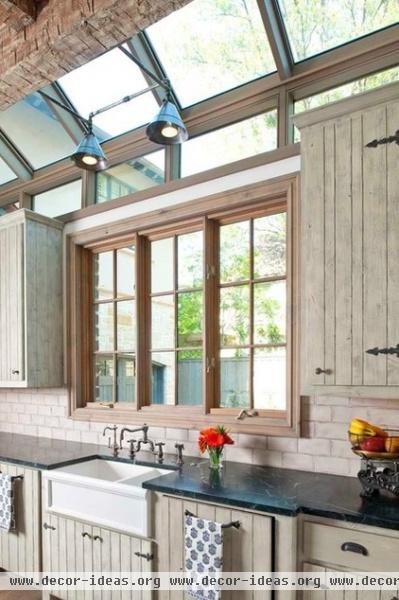
Apron Front or Farmhouse Style
These charming sinks are right at home in traditional or cottage-style kitchens with their exposed fronts and potential for decorative detailing. Apron front sinks are typically wider, deeper and heavier than the other sink types, so they require at least a 36-inch-wide sink cabinet. The sink cabinet must also be able to accommodate the apron front.

Of course, apron front sinks are no longer just for old-world or farmhouse-style kitchens. There are many stunning modern versions of the apron front sink available today, such as the brushed stainless steel beauty pictured here. Also, while these sinks have traditionally come with a single bowl, they now also come in divided, two-bowl versions.
These are certainly attractive sinks, but if you are considering installing one in your kitchen there are a few issues to keep in mind. I've heard a few complaints about how easy it is to accidentally break a dish or glass against the apron when aiming to place the item in the sink.
Also, if you go for a stainless steel or copper version, be aware that the apron could get scratched up from contact with belt buckles or metal buttons on your jeans. And, unless it is installed as an undermount (with the countertop extending over the sink edge), there will be a seam between the sink and countertop, where moisture and gunk can collect.

Undermount
This is my favorite mounting type for a sink. I like the clean look, not to mention the easy-to-clean design. You can undermount a sink to any sturdy, non-porous countertop, such as natural stone, concrete, quartz and solid surfacing. I have heard of successful applications to wood countertops, but extra care must be taken to protect the wood from water. There are also laminate countertop manufacturers that claim you can undermount a sink to their material. Discuss with your countertop retailer to see if this is an option for you.
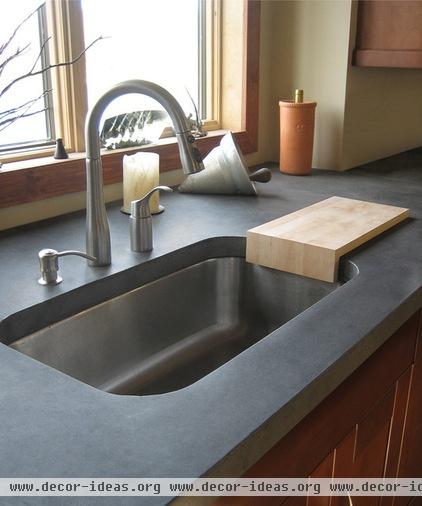
Depending on your particular undermount sink, you may have some options regarding the reveal — or how much or little of the top of the sink is visible just below the inside edge of the countertop. I tend to prefer a no-reveal, or zero-reveal, look — just a smooth, straight drop from the countertop into the sink. This makes the sink and surrounding countertop area super easy to clean, as there is no ledge for food particles to collect in. You can also specify a "negative reveal" where the countertop extends over the edge of the sink.
I think a slight negative reveal —⅛ inch or less — is fine, but any more than that and you run the risk of breaking dishes on the overhanging lip of the countertop as you lift them out of the sink. I would also be wary about not being able to see and maintain the water-tight seal between the sink and countertop — it can be difficult to view with a negative reveal.
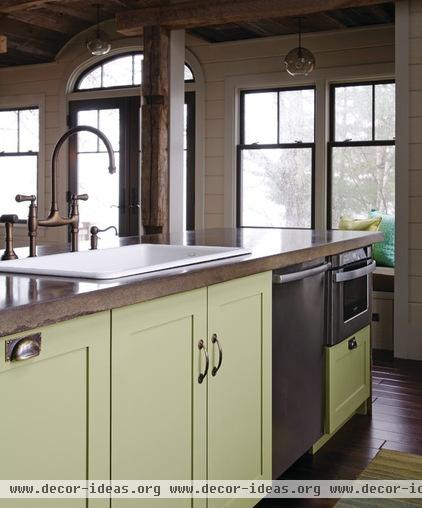
Drop-in
This is a popular sink style for those on a tight budget, for those installing a sink within a porous countertop body material (such as wood or laminate) or those looking to repurpose a vintage sink or get a vintage look.
This type of sink is installed over the countertop, into a cutout, and then sealed around the edge where the sink lip meets the countertop. The obvious downside to a drop-in sink is that the raised lip makes it more difficult to wipe food particles directly into the sink, as you can with an undermount sink.
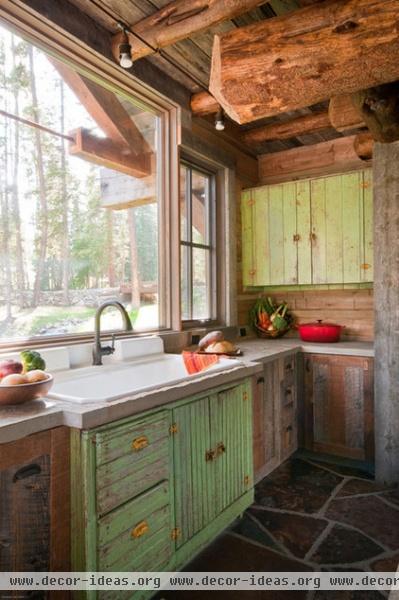
Where undermount sinks have a clean, minimalist feel, drop-in sinks are very charming and work well in rustic or farmhouse-style kitchens. Similar to apron front sinks, drop-in sinks can be a real eye-catching decorative element in a kitchen.

Integral
If you'd rather your kitchen sink blend in, and you are installing stone, metal, solid surface or quartz countertops, think about having an integral sink fabricated. Your countertop fabricator simply forms a sink using the countertop material. The look is very clean and seamless — perfect for a contemporary kitchen.
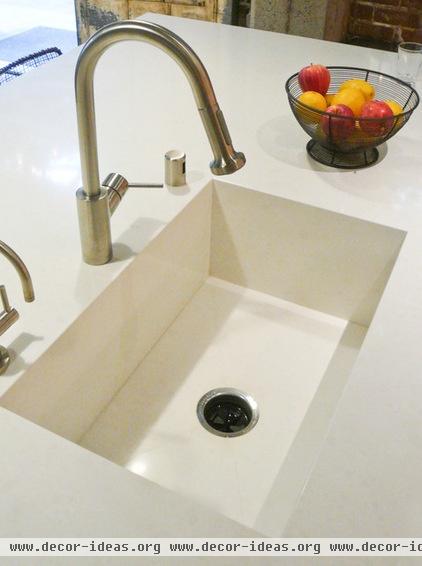
Here's a close-up of an integral sink. These sinks have no nooks and crannies for food particles to collect in, making cleanup a breeze.
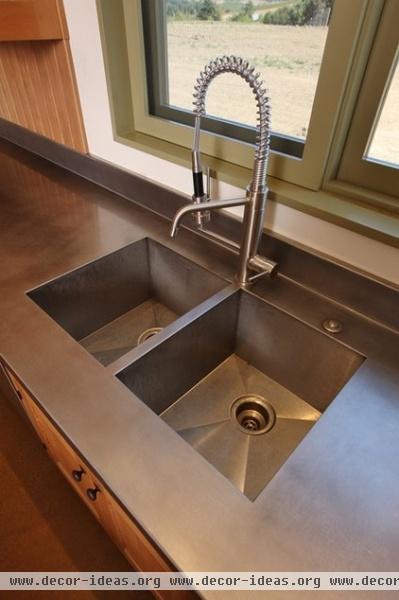
An integral sink is one of the more expensive mounting types because these sinks are usually custom designed and manufactured. You are paying for the raw material as well as fabrication and installation, which can be costly. But for those with the budget for it, it's certainly an appealing option.
More: Guides to kitchen sink materials and styles
Tell us, kitchen lovers: What type of sink installation do you like best?












